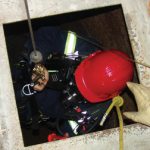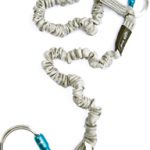** Disclaimer: Although Jim White is a member of the NFPA Technical Committee for NFPA 70E “Standard for Electrical Safety in the Workplace,” NFPA 70 “National Electrical Code” CMP-13, NFPA 70B “Recommended Practice for Electrical Equipment Maintenance” and ASTM F18 “Electrical Protective Equipment For Workers”, the views and opinions expressed here are purely the author’s and shall not be considered an official position of NFPA, ASTM or any of its Technical Committees and shall not be considered to be, nor be relied upon as, a formal interpretation or promotion of the NFPA or ASTM. The audience is encouraged to refer to the entire text of all referenced documents.
A good electrical safety program is integral to an overall safety plan for a wind energy project. With the recent updates to the NFPA 70E and OSHA 1910.269 requirements for personal protective equipment, what do wind site operations and maintenance managers and staff need to review?
First of all, let’s talk about why we have these rules. Electricity can be very toxic if not managed safely, which includes identifying hazards, assessing the risks and implementing appropriate risk controls to avoid or mitigate the possibility of injury to workers or damage to the equipment. Both the NFPA 70E and the OSHA requirements provide minimum standards for safe working conditions, but they have to be implemented and the electrical workers need to be well trained and managed. Mistakes can be extremely serious.
There have been some critical changes in several areas that might affect the choice of PPE. Those changes include how arc flash boundaries are calculated, labeling requirements and what equipment must be rated and labeled. Operators and maintenance personnel need to clearly understand the requirements and make sure the company policies are current and the equipment labels are still valid. One obvious change is that the prohibited approach category has been removed as it was confusing and provided no additional insight into the choice of PPE. Both the limited approach and the restricted approach categories are still used. The good news is that no new PPE is required to meet the update.
EQUIPMENT LABELING
Any electrical device that is likely to be inspected, serviced, or maintained while energized should display the arc flash warning label. This includes switchboards, motor or generator control centers, drives and converters, panel boards, transformers, and motor and generator terminal boxes —really almost anything with a wires and a door.
LABEL INFORMATION
At a minimum, these arc flash warning labels should display: the nominal voltage of the equipment; the arc flash boundary; and some information regarding the PPE requirements — minimum rating, site-specific levels, incident energy at a specific distance, or the specific PPE from the standards. Most labels also include equipment identification and some information on what protection is upstream in the system. Older labels might be acceptable if they contain the incident energy information or specify the required level of PPE. However — and this is important — if the review of the incident energy analysis indicates that the label is inaccurate, it must be updated. Labels that are illegible due to fading, wear, or damage must also be replaced. Remember, the owner of the electrical equipment is responsible for the documentation, installation, and maintenance of the label, as well as for documenting the data and the method of calculation. Figure 1
CHOOSING THE PROPER PPE
Protection equipment selection should follow one of two methods: referencing the information on label, or, if no incident energy analysis has been performed, from the tables included in the NFPA70E standard. One of the changes for 2015 is regarding use of the tables. There are only two conditions for electrical equipment. The first condition is if no arc flash hazard protective clothing and PPE is mandated; the second condition is if use of those items is mandated. Table 130.7(C)(15)(A)(a) uses the phrase “Arc Flash PPE Required,” but that may not be accurate. Since NFPA 70E sets minimum requirements, it is better to say arc flash PPE is not mandated. It may be required, even though the table indicates it is not. The note at the bottom of Table 130.7(C)(15)(A)(a) states: “The assessment of the likelihood of occurrence contained in this table does not cover every possible condition or situation. Where this table indicates that arc flash PPE is not required, an arc flash is not likely to occur.” This is very important, as the committee is stating they cannot foresee every possible scenario or condition and the worker had better assess the situation when choosing his arc-rated clothing and PPE. One of the key phrases in the note is “not likely,” which does not mean “can’t” or “won’t.” I would advise workers to wear arc-rated clothing and PPE if they have any doubts about the condition of the equipment, if it’s a larger frame circuit breaker (anything or 600A or 800A), or if they just have an uneasy feeling about things. Lying in a burn unit with tubes and hoses coming out of you is not where we want our workers to be. Figure 2
One of the biggest positives I see in the new table method is that there is no reduction in the level of PPE based on perceived risk. This eliminates the potential for a worker being under-protected due to a reduction in the category of clothing based on risk. It is also critical that the equipment is properly installed and maintained for these standards to apply. In order to use the table method, the equipment must be installed and maintained in accordance with applicable industry codes and standards as well as the manufacturer’s recommendations. Possibly even more important is the fact that any evidence of impending failure, such as signs of arcing, overheating, loose or bound equipment parts, visible damage, deterioration, or other damage. All covers and doors must be in place and properly secured, as well.
ASSESSING EQUIPMENT OPERATING CONDITION
It is common industry practice is to apply labels with the date and overall condition when the equipment is tested and maintained in the field to help the employee assess overall electrical equipment maintenance status. Remember, none of these standards apply if the equipment is not operating properly. A good testing and maintenance program is critical to maintaining a safe workplace. Workers should also bear in mind that the further from the date the calibration or test label is, the more likely there is to be a problem with the equipment. Figure 3
OSHA 1910.269
OSHA 1910.269 applies to most of the balance of plant in a wind farm, as it specifically pertains to utilities. A lot of the changes are to improve consistency with OSHA 1926 Subpart V, which was also updated. The changes include how information is managed between the wind farm operator and contractor, fall protection, minimum approach distances, arc flash hazard assessment and, of course arc flash protective clothing and other PPE. It states clearly that employers must identify employees who may be exposed to arc flash hazards and to make a reasonable estimate of the incident energy. This requirement went into effect on January 1.
Under the new requirements, outermost clothing must be arc rated if the nominal voltage is above 600V; if an arc incident might ignite or melt clothing; or if the incident energy is greater than 2 cal/cm2. There are also clear requirements for hand, foot, head, and face protection. This goes into effect on April 1, 2015. My recommendation is to use the NFPA 70E guidelines on incident energy exposure, instead of the 2 cal/cm2 used by .269. Numerous studies have shown that above 1.2 cal/cm2 full-on second degree burns occur, increasing the likelihood of infection. Someone who has suffered wide-area burns does not need to have infection set in.
IN CONCLUSION
Those of us in the electrical industry take shock, arc flash and arc blast hazards very seriously. Injuries are becoming less common, but the risks are still real. Well designed and clearly written safety programs, including strict adherence to lock out/tag out rules, is the best way to keep your employees going home in the same shape as they came to work. Add to that a strong worker training and awareness plan and we can all stay safe.



































